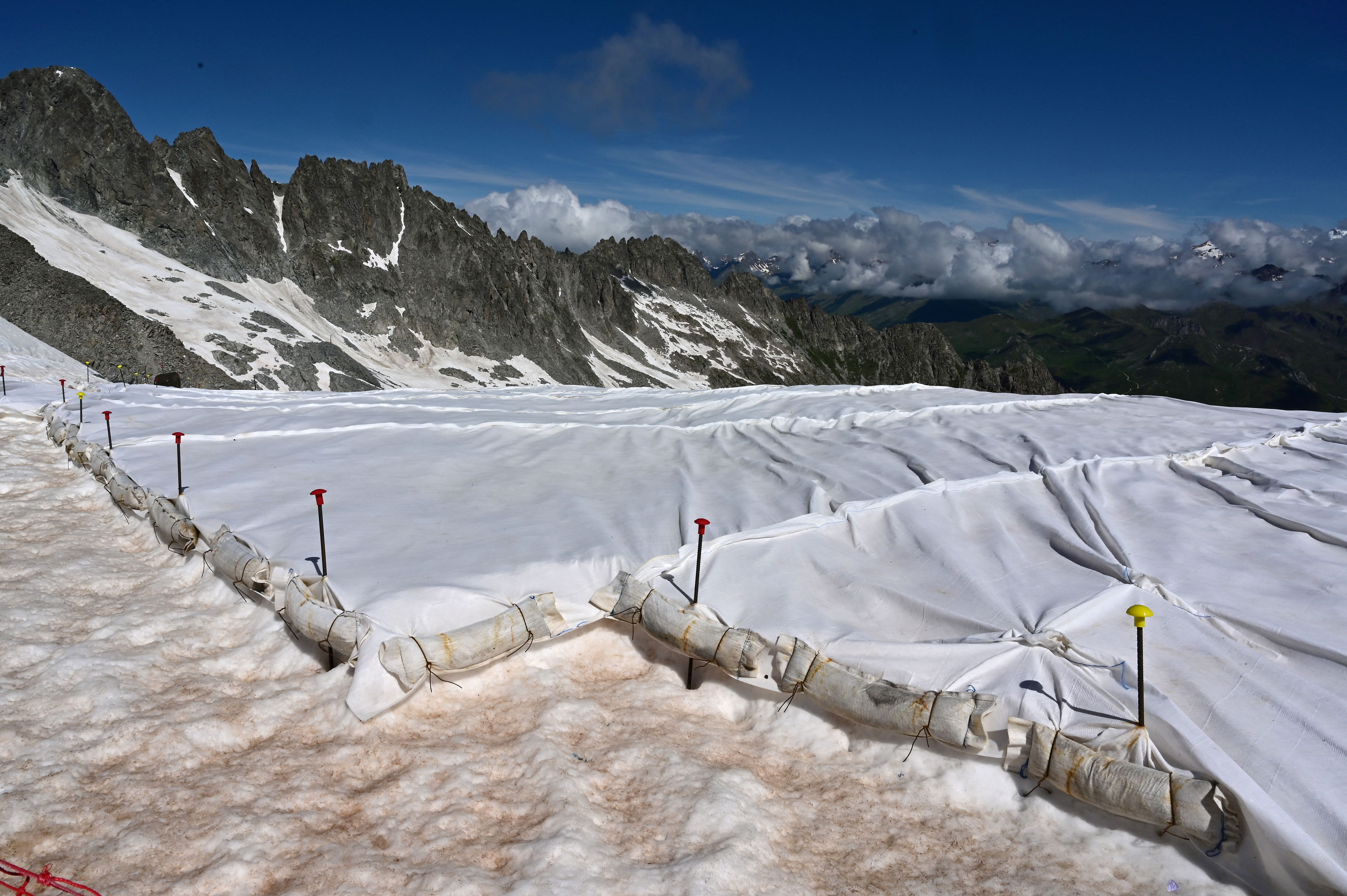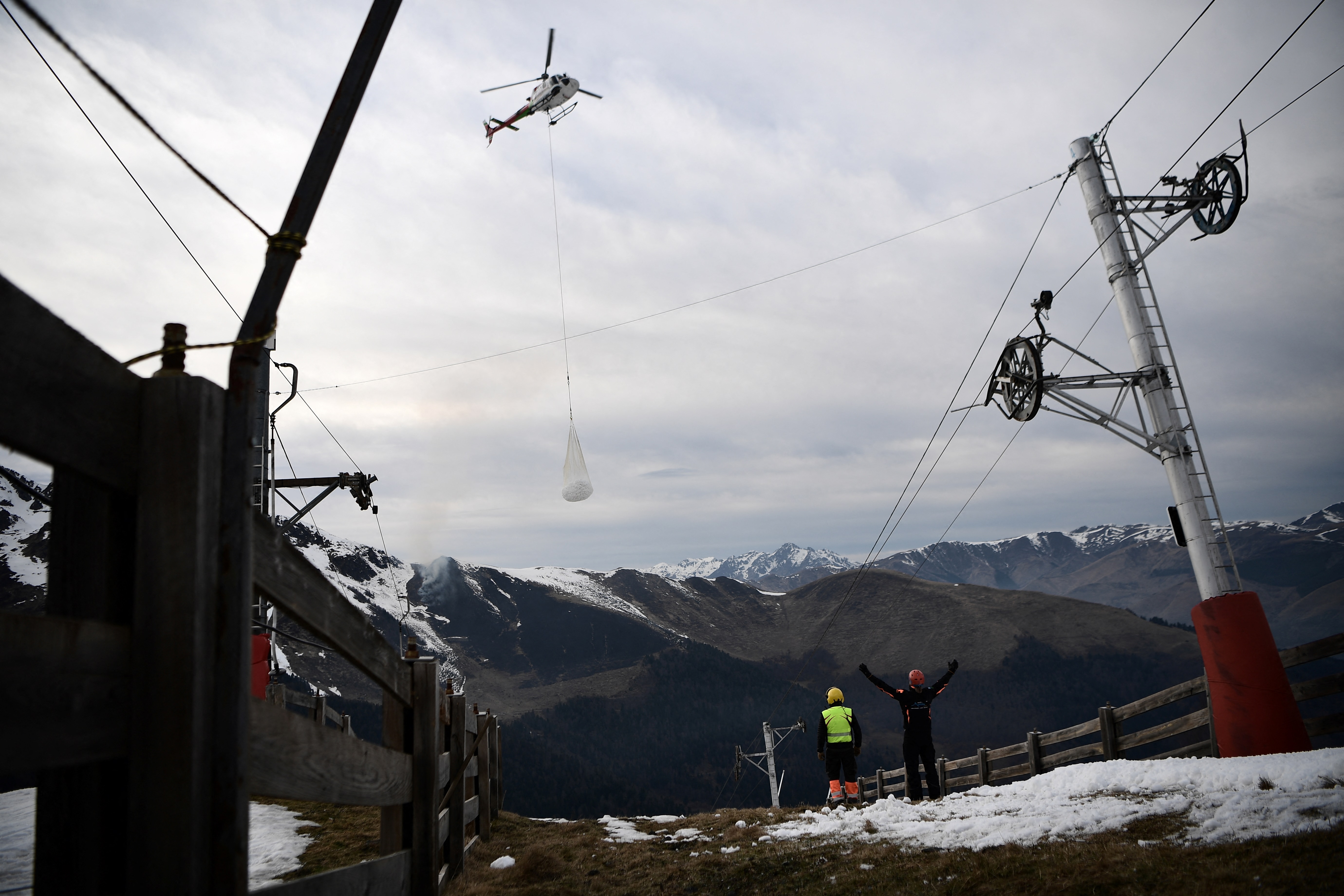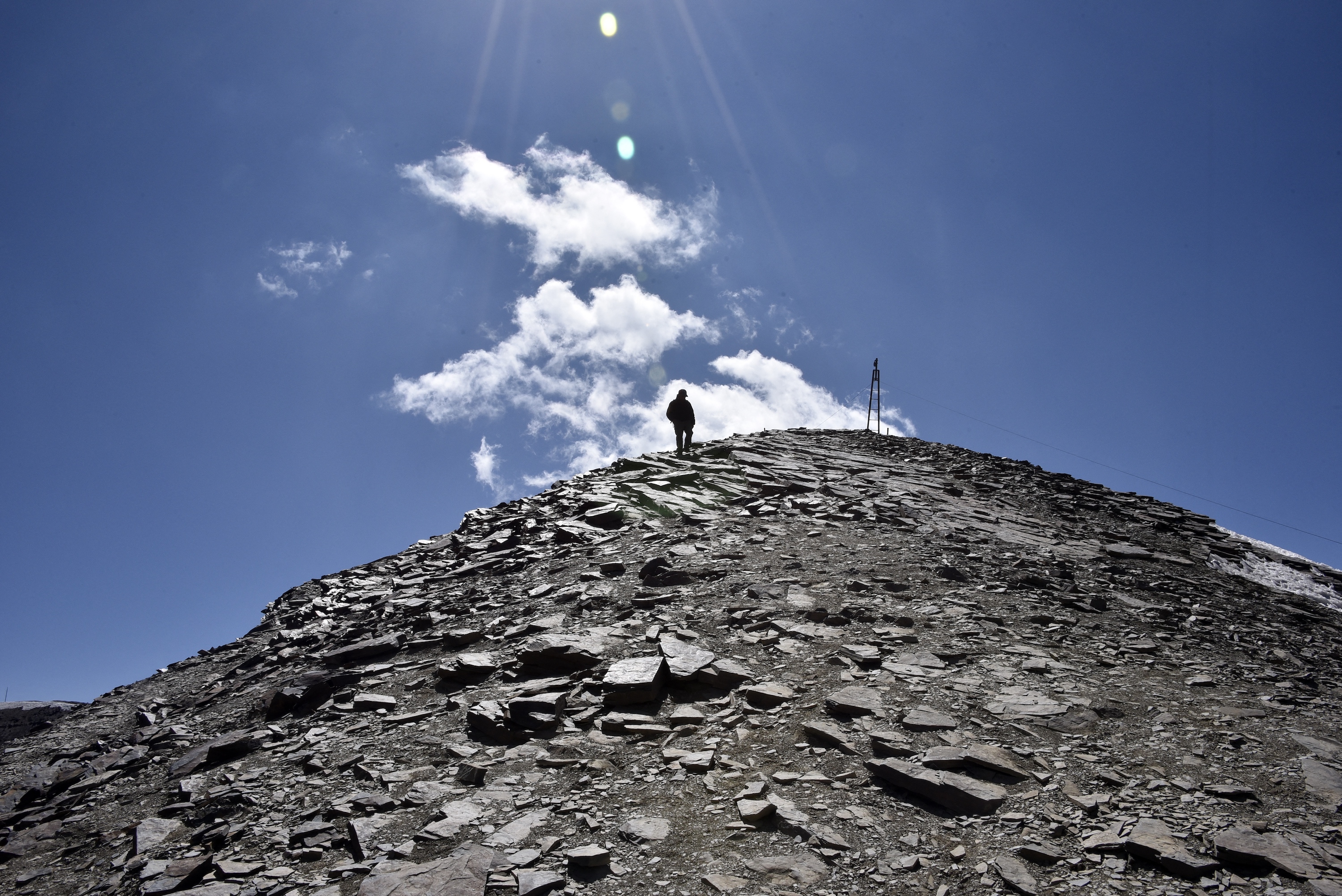Fake Snow Olympics Are an Omen of Climate Change Upending Winter Sports Forever
February 11, 2022Taiwanese skier Ping-Jui Ho fears he may lose his job to the growing climate crisis.
The 23-year-old has been skiing on the snow-capped mountains of Austria since the age of 15, and never felt there was a lack of snow. But when he went to train this year, stones peeked through the white powder.
“When it’s warm, the snow is getting softer and little stones get into our skis and break them,” he told VICE World News.
There wasn’t enough snow blanketing the trails to ski without issue, Ho said, and the situation was getting “terrible.”
With global temperatures rising, natural snow needed for winter sports is disappearing. Though winter athletics aren’t on the brink of disappearing overnight, the long-term effects of climate change will be dire.
A recent study found that of the 21 cities that have hosted the Winter Olympics in the past 50 years, only one—Sapporo in northern Japan—could provide a suitable venue for the games in 2050. As a solution, in part forced, venues are relying more on artificial snow.

The 2014 Sochi Games and 2018 Pyeongchang Games used up to 80 percent and 98 percent fake snow, respectively. And the Beijing Games is the first Winter Olympics to rely entirely on artificial powder.
Though this allows countries that don’t usually have the climate for such weather to host winter sports, athletes don’t see it as a tenable solution.
Manex Silva, a Brazilian skier who grew up in Spain, said skiing on artificial snow at the Beijing Games affected his performance, though not significantly. He usually skis on natural snow during the entire season, and said the artificial version felt slower and stranger. “The skies stop a little bit in the snow, it’s not as fluid as natural snow,” he told VICE World News.
To adjust to competing on fake snow, which Silva described as feeling heavier, Silva said he’d have to use skis usually used for snow in very cold temperatures.
Adam Runnalls, a Canadian biathlete—a winter sport that combines cross-country skiing and rifle shooting—agreed with Silva in that competing in artificial snow didn’t feel too different from the natural powder. He appreciated that fake snow would allow competition venues to open in places previously unimaginable.
But temperatures still needed to be below zero for the snow to stick, Runnalls said, so it was far from being an answer to global warming—an issue that’s increasingly affecting his sport.
“The biggest impact for us is just the venues. I think they’re going to need to change because places that had snow 20 years ago just don’t anymore,” he told VICE World News.
Competitions will either have to be held in colder climates or places with higher elevation, which would make it even more difficult for him to catch his breath to switch between skiing and shooting, he added.
“It’s very hard to recover, and so coming into the range for shooting, for instance, it’s really hard to get your breathing down and feel comfortable on the mat,” he said.

To make fake snow for the Beijing Olympics, Italian company TechnoAlpin supplied snow guns for the Games. These machines pump air into fan guns that break the water into small droplets, which then freezes as they land on the ground, turning into snow. Artificial snow is usually denser, as the manufactured snowflakes are spherical compared to the natural crystals we normally see.
But to make the snow, Chinese Olympic organizers needed massive amounts of water, a scarce resource in the country. In 2019, it estimated that about 49 million gallons of water was required for these Games. In order to carry water from reservoirs, pumping stations and a system of pipes were constructed, a process which reportedly strained local water supplies. Chinese state media has denied such allegations.
China also claimed that these Winter Games will be one of the greenest in Olympics history, with the National Alpine Center relying solely on solar panel energy. But reports have found that in order to host these games, organizers have had to eat into a key nature reserve, which could threaten China’s biodiversity and ecosystems.
To reduce the environmental impact of hosting the Winter Games, China has pledged carbon neutrality.
Low-carbon transportation methods, such as electric cars, instead of conventional gasoline vehicles are used. Natural carbon dioxide refrigeration systems will also replace hydrofluorocarbon refrigerants traditionally used to cool ice venues, which can be thousands of times more potent than CO2.
The biathlete Runnalls, who’s also a sustainability ambassador for the International Biathlon Union, said he believes leading industry members are working toward making Winter Games more sustainable. Though the impact of climate change isn’t always immediately evident, he said, if the crisis doesn’t slow down, venues will start to disappear.
“Places that have had races there for 30 years and have culture there, just can no longer do it because there’s just not a reliable enough snow source there,” he said.

Silva, the Brazilian skier, also added that part of the beauty of winter sports was that you needed snow to do them. Having artificial snow year round to replace natural powder would make skiing less exceptional, he said, as the excitement was in the wait.
“You wait for the time to ski again—it’s not like cycling, where you can be cycling the whole year.”
